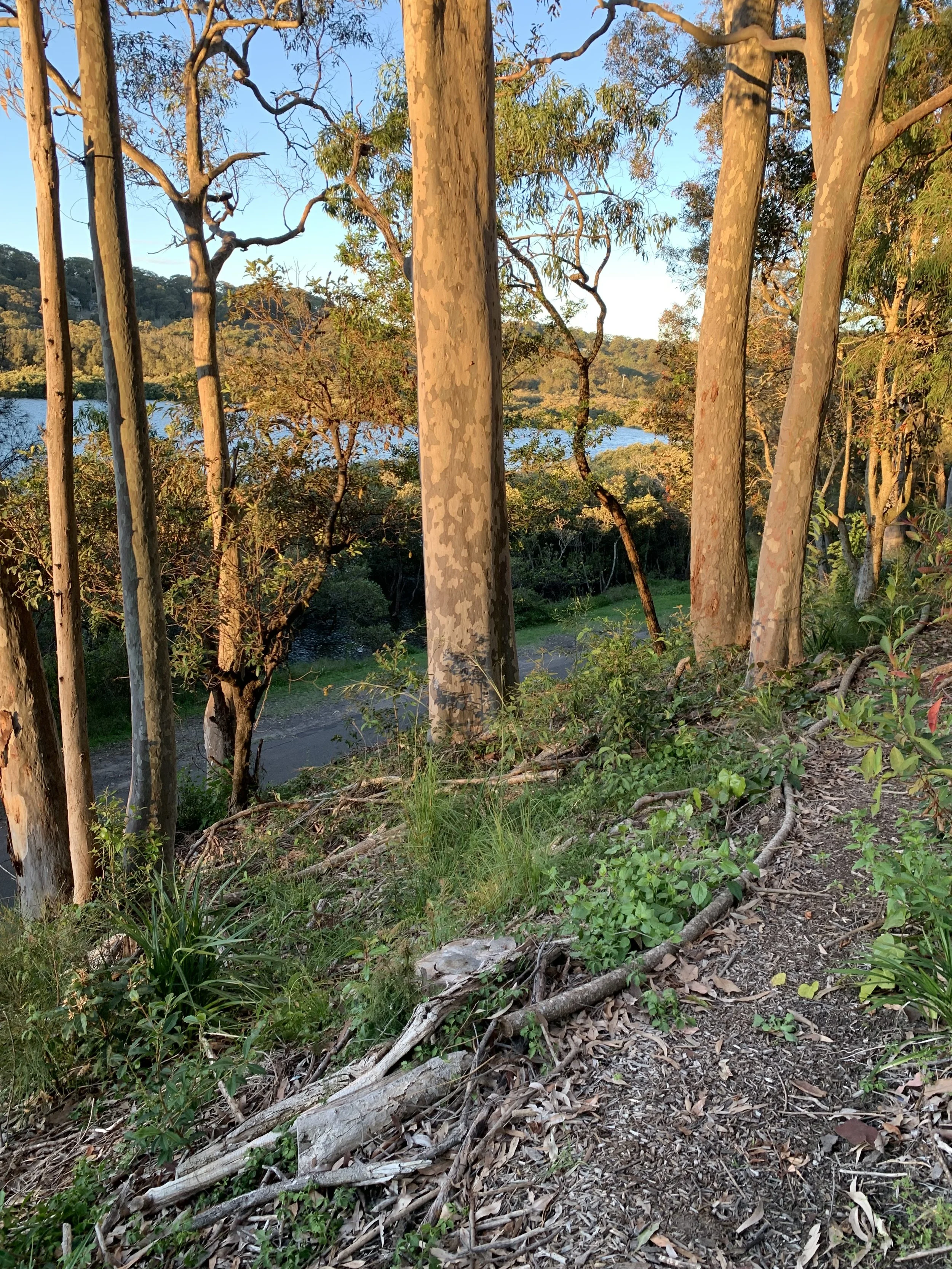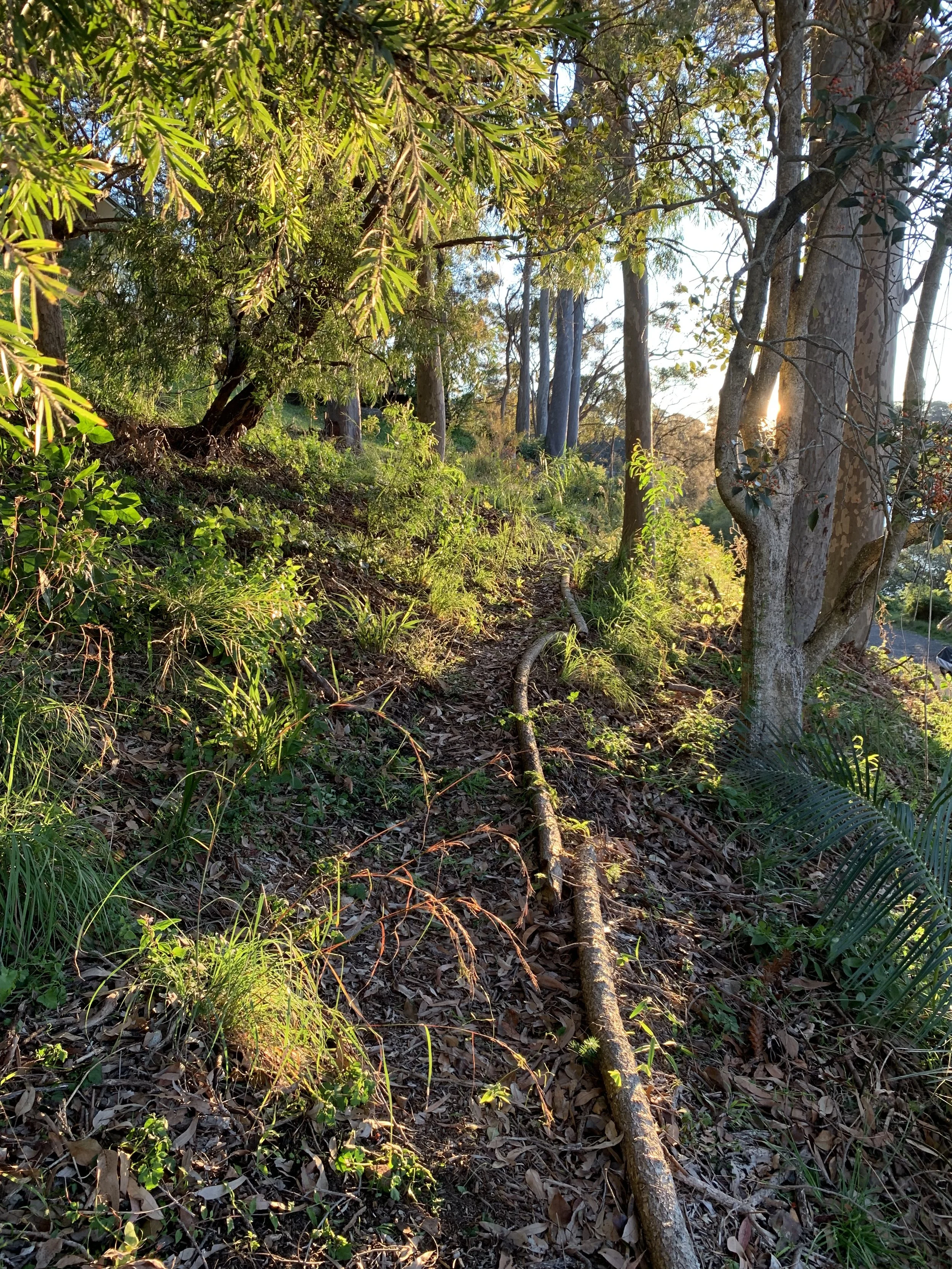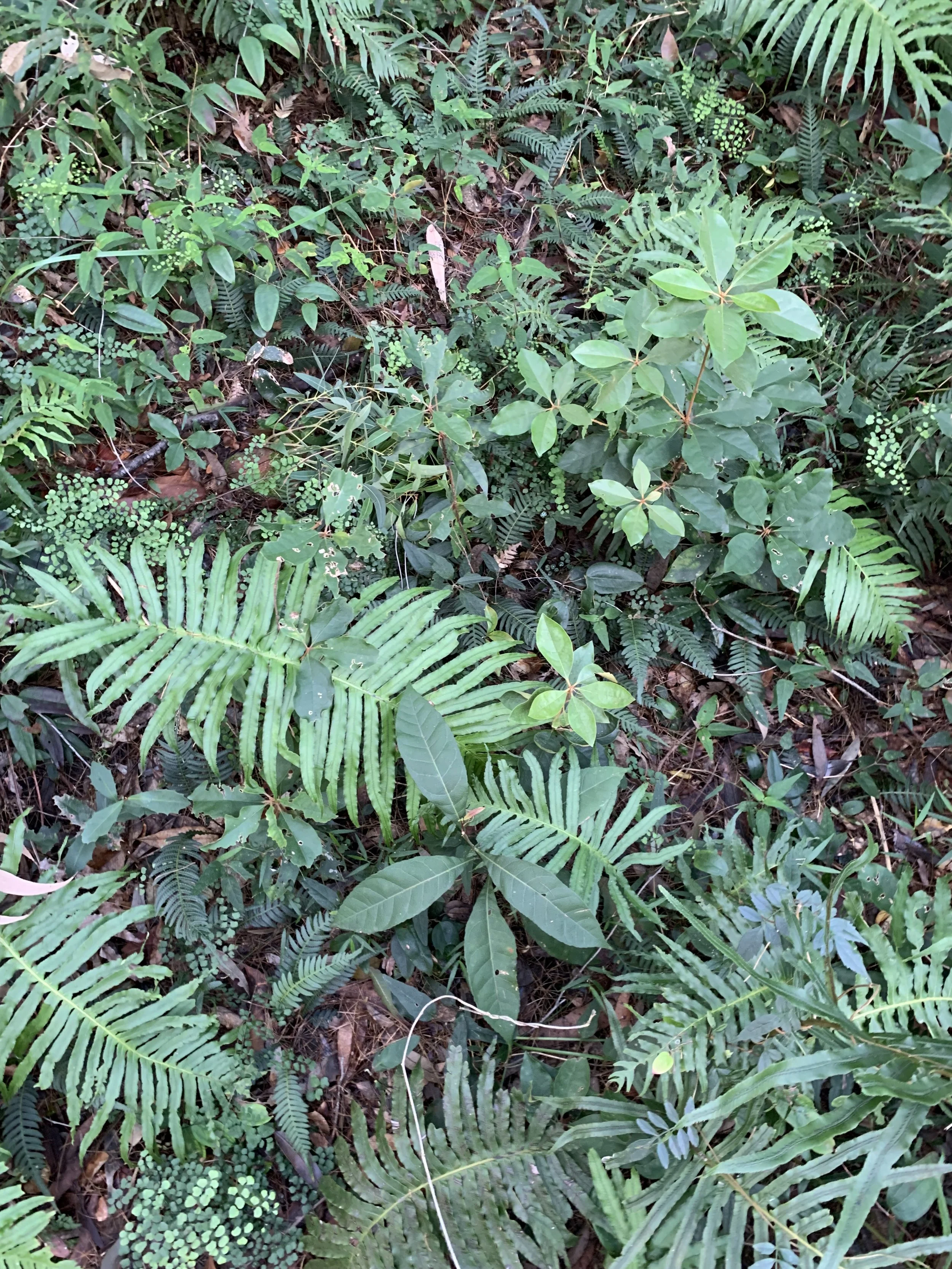Careel Colluvial Escarpment
In the late afternoon sun, at full-tide, the Spotted Gums on this Careel Bay property hold a poetic quality. Their pale limbs frame the bay water, like great prefaces for the Saltmarsh, Mangrove, Hills and Gullies of the Pittwater beyond.
Below now there are many saplings with a season of growth beneath them and they, too, are reaching to become part of the story of this landscape.
When we began working on this property, the weeds that had smothered the escarpment had been cleared by bush regenerators, and over two-thousand tubes had been planted. As time has passed, we have introduced more Pittwater-Wagstaffe Spotted Gum Forest species to fill gaps in particular families and genuses.
What we hope for is not just to re-establish an existing ecological community, but to consider where there might be spaces to fill. Deforestation and degradation of suburban bushland has left many endemic plants at the periphery, and while these plants may not have initially existed on this slope, we feel that by introducing them in a regenerative setting, these plants may be at less risk of local rarification.
It has been challenging to find a reference community whilst undertaking this project. Avalon has lost a vast majority of its Spotted Gum forest, and there are no in-tact PWSGF communities on the Peninsular with the same North-East aspect.
We travelled to Scotland Island to explore PWSGF, but what was in-tact was largely South facing. Evan visited Morning Bay to explore what a NE facing Spotted Gum forest on Erina soil might look like in the Pittwater area and found a dominance of Kangaroo Grass (Themed triandra), Xanthorrea, and little mid story. As we progress with this project it will be interesting to see in what ways we can balance the need to recreate an endangered plant community, and where we can find latitude to include local plants that are far too rare in suburban gardens.
PWSGF community Scotland Island understory- South facing side.



